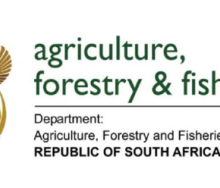World Trade Organization (WTO) members have continued to facilitate imports and generally exercise restraint in the use of trade-restrictive measures from mid-October 2022 to mid-May 2023, according to Director-General Ngozi Okonjo-Iweala’s mid-year report on trade-related developments,
However, while the number of export restrictions on food, feed and fertilisers has come down substantially, many such measures remain in place, contributing to supply uncertainty and price volatility.
Ngozi Okonjo-Iweala said the fact that WTO members had been taking more steps to facilitate imports illustrated how trade was a valuable tool for pushing back against inflationary pressures.
Pointing to the introduction of export restrictions on food, feed and fertilisers since the start of the war in Ukraine in February 2022, Okonjo-Iweala noted that several such restrictions had been phased out.
While the reduction is a “welcome step” in the right direction, “it also means we still have quite a way to go,” she said.
The report, presented to members at a Trade Policy Review Body meeting on July 27, arrives at a time when the global economy continues to be affected by multiple crises, including the continuing war in Ukraine, events related to climate change, high food and energy prices, inflation and the lingering ramifications of the Covid-19 pandemic.
The report indicates that the pace of implementation of new export restrictions by WTO members has increased since 2020, first in the context of the pandemic and subsequently with the war in Ukraine and the food security crisis. The WTO Secretariat's ongoing monitoring shows that as of July 14, out of the 104 export-restrictive measures on food, feed and fertilisers introduced since the start of the war in Ukraine in late February 2022, 59 are still in place, covering roughly $24.5 billion of trade (down from 63 in mid-May 2023).
During the review period, WTO members introduced 182 new trade-facilitating and 110 trade-restrictive measures on goods unrelated to the pandemic. Most trade-facilitating measures were import measures and most trade-restrictive measures were export measures. For the third time since the beginning of the Trade Monitoring Exercise in 2009, the number of new export restrictions has outpaced that of import restrictions.













